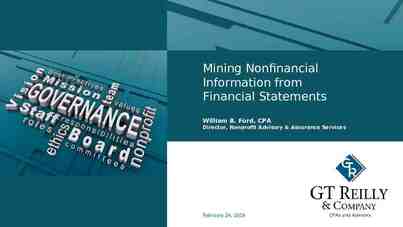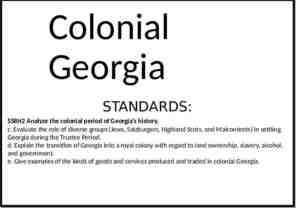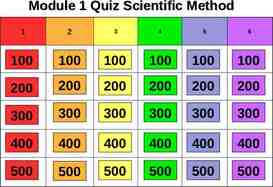QUALITY, RELIABILITY AND SUSTAINABILITY OF NATIONAL DISASTER DATABASES
27 Slides1.37 MB

QUALITY, RELIABILITY AND SUSTAINABILITY OF NATIONAL DISASTER DATABASES Preliminary Results R.Below and F. Vos EM-DAT TAG Meeting, New York, 26-27 October, 2009

DATABASE DESCRIPTION

Database Description: Nepal, Sri Lanka, Indonesia (DesInventar model) NEPAL Name of Database SRI LANKA INDONESIA Disaster Inventory/Information Management System DIMS Sri Lanka Disaster Information System Indonesian Disaster Data and Information database SDIS Dibi Organization National Society for Earthquake Technology (NSET) Disaster Management Centre (DMC) Online database YES YES National Disaster Management Agency (BNPB) YES Level of Observation Sub-national Sub-national Sub-national Resolution Local Local Local Coverage National National National Type of events monitored Time period covered Number of records Natural and technological disasters 1971-2003 (2004-2008) (38 years) 16,879 Natural and technological disasters 1974-2009 (36 years) 100,846 Natural, non-natural and social disasters 1997-2008 (12 years) 6,110 Sources National newspapers Government Media Government Acronym Paul Spiegel (2005). Differences in World Responses to Natural Disasters and Complex Emergencies. JAMA , Vol. 293 (15), pp. Languages English, Nepali English English, Indonesian 1915-1918

Database Description: Vietnam, Bangladesh, Philippines (Independent Models) VIETNAM BANGLADESH PHILIPPINES Damage and needs assessment system DANA Disaster Incidence Database Comprehensive Disaster Management Programme (CDMP), Ministry of Food and Disaster Management (MoFDM) YES (in development) Office of Civil Defence Online database Department of Dyke, Flood and Storm Control (DDMFSC) – Disaster Management Center (DMC) YES (in development) Level of Observation Sub-national National and sub-national National and sub-national Resolution National and local Sub-districts National and Sub-national Coverage National National National Type of events monitored Natural water-related disasters Natural disasters, accidents and complex emergencies 1970-2009 (40 years) 76 Natural disasters, major accidents and conflict 1968-2009 (42 years) Over 500 Name of Database/Acronym Acronym Organization DIDB Calamidat.PH Disaster Event Database Calamidat YES (in development) Paul Spiegel (2005). 1989 – 2008Differences in World Responses to (20 years) Natural Disasters and Complex Emergencies. JAMA , Vol. 293 (15), pp. Number of records 211 1915-1918 Time period covered Languages English - Vietnamese English English Sources Governments Government Government Media

DATABASE ANALYSIS

Database Analysis (1) NEPAL Methodology Concepts and definitions Data collection Data entry Data analysis No entry criteria Standard definitions Hierarchical classification Standard data collection Standard entry form and methodology Yes, tables, charts (through DesConsultar software), Separate analysis in excel; SRI LANKA No entry criteria Standard definition Equal classification (other classification use only to produce analysis) Standard data collection Standard entry form and methodology Yes, tables, charts (through DesConsultar software); Technical orientation Use of a unique ID number Accuracy and Reliability Data sources Access database; YES Relational database, SQL; NO Priority: media; No source checking; Priority: Government, and then press (historical data) Database Standard compilation Standard compilation INDONESIA No entry criteria Standard definitions Equal classification No standard data collection Standard entry form and methodology Yes, tables, charts (through DesConsultar software); Data analyzed in excel and ArcGIS, PostgreSQL database, Relational database, SQL NO Data from local governments, validated by nat. government; University; Paul Spiegel (2005). Differences inprocedure World Responses to procedures No validation Validation of data withJAMA Gov. data checking Natural Disasters and Complex Emergencies. ,NoVol. 293 once (15), pp. inserted; 1915-1918 Training Initial training, no follow up Depends on funding; user Training for users and manual integrated into DesInventar but additional training required database administrators

Database Analysis (1b) VIETNAM Methodology Concepts and definitions No entry criteria Standard definition Equal classification Data collection Data entry Standard data collection Standard entry form Data analysis No data analysis Technical orientation Flat database linked to excel/PDF files; NO Use of a unique ID number BANGLADESH No entry criteria Standard definition (not complete) Equal classification Standard data collection Standard entry form Data control at different level; No data analysis (not integrated into the system) – only GIS component Relational database connected to GIS interface YES PHILIPPINES Existence of Criteria use of National standard Equal classification Standard data collection Standard entry form Data control at different levels; Basic analysis through an Integrated system (tables & graphs) MySQL YES Accuracy and Reliability Data sources One source CCFSC (government), data checked with CCFSC; 6 sources : 3 governmental, Government (NDCC report), Ngo’s and press (both gov and priority given to official/gov. private); priority given to gov. sources sources Paul Spiegel (2005). Differences in World ResponsesStandard to compilation Database Standard compilation Standard compilation procedures procedure (limited currently Natural Disasters and Complex Emergencies. JAMA ,procedure Vol. 293 (15), pp. at the event/national level) 1915-1918 Training No training for staff, No specific training, guidelines No specific training but staff guidelines available needed supervision

Database Analysis (2) NEPAL SRI LANKA INDONESIA YES - Printed reports , online data querying and extraction, no GIS functions; no further analysis or development of outputs Via DesConsultar tool User guidelines website, no tools to facilitate interpretation of outputs YES - Preliminary report (2007), new report upcoming on disaster risk poverty and human development district based report Via DesConsultar tool User guidelines website but not enough YES - Printed analytical reviews, online data querying and extraction, GIS and Hazard Prone Index; Timeliness/periodicity Yearly basis No interval Relevance and user profile None Serviceability Outputs and functions Interpretability User documentation Via DesConsultar tool User guidelines website (Indonesian language), no tools at website to facilitate interpretation of outputs, but exist in reports; Data published on yearly basis Monitoring of user profile, Monitoring of user profile UNDP and DMC working together to address needs of Interoperability (GLIDE) users Common format within Common format within Common formats within Desinventar, no data shared DesInventar; project of linking Desinventar, data shared with Paul Spiegel (2005). Differences in World Responses to with other DBs; No use of with other database in the Indonesian poverty reduction GLIDE country/gov. agencies program database (SIMPADU); Natural Disasters and Complex Emergencies. JAMA , Vol. 293 (15), pp. (technical issues first to be No use of GLIDE 1915-1918 solved); No use of GLIDE

Database Analysis (2b) VIETNAM Serviceability Outputs and functions Interpretability User documentation Timeliness/periodicity Relevance and user profile Interoperability (GLIDE) BANGLADESH PHILIPPINES Online information querying, access to full event reports (PDF) and yearly summaries as static tables; no GIS functions, No tools to facilitate interpretation of outputs; User guidelines in Vietnamese language; Online querying information but limited to reports; full access to reports (PDF); GIS function Limited functions Online querying information (ongoing), access to full event reports (PDF) Under preparation Under preparation Data publicly available within 2 weeks; No user profiles /-real time Data available within 2 to 3 weeks No user profiles Not part of database network, no data shared with other DBs, GLIDE not used No user profile (nonrelevant /database development at early stage) Not part of database network, GLIDE used Limited functions ADRC and OSADI, GLIDE used Paul Spiegel (2005). Differences in World Responses to Natural Disasters and Complex Emergencies. JAMA , Vol. 293 (15), pp. 1915-1918

Database Analysis (3) NEPAL Accessibility Restrictions SRI LANKA Data free of charge, accessible from 1971-2007; General address available on NSET website Data free of charge Information on database methodology, objectives, definitions, data sources Information on institute, goals and objectives of database, methodology, definitions, sources Expertise Information on data analysis, dissemination and limitation Information on data analysis, dissemination Quality Management Management supportive of quality improvement Data not used for resource allocations Management supportive of quality improvement Data used for resource allocation Contact details Credibility Transparency Impartiality Minimum contact details available on DMC website INDONESIA Data free of charge, accessible from 1997-2008; Contact details available on Dibi website Information on institute, database objectives, methodology and definitions in report, no info of data sources Conference attended Management supportive of quality improvement Data used for resource allocation, role in respectability Paul Spiegel (2005). Differences in World Responses to Natural Disasters and Complex Emergencies. JAMA , Vol. 293 (15), pp. 1915-1918

Database Analysis (3b) VIETNAM Accessibility Restrictions PHILIPPINES BANGLADESH No cost, accessible from 19892008; No cost; but access limited No cost, no restriction to access data Contact details Credibility Transparency YES YES YES Information available on institute Information available Expertise No reports No information; at this point the database is not used widely No reports Quality Management Management supportive of quality improvement Impartiality Data used for resource allocations Management support for further improvement of data quality Data used for resources allocations Yes, report from OCD & NDCC member agencies Data used when new events occurring, press conference Management supportive of quality improvement Data indirectly used for resources allocations Paul Spiegel (2005). Differences in World Responses to Natural Disasters and Complex Emergencies. JAMA , Vol. 293 (15), pp. 1915-1918

Database Analysis (4) NEPAL Prerequisites and sustainability Institutional framework Maintained independently with limited functions Resources Collaboration network Lack of resources for daily data entry; No collaboration with other databases; Continuity Long-term objective of institutionalizing disaster inventory from local to national level, no current support from stakeholders SRI LANKA Government UNDP/Regional Centre, DesInventar/La Red, UNDP and DMC DesInventar/LaRed and UNDP , Gov.agencies Linking with other data sets from Governmental agencies INDONESIA Maintained independently, but need support from UNDP for sustainability, integrated in government dept., Resources needed for staff at BNPB UNDP, BNPB, BAPPENAS, DFID, Ministry of Home Affairs for developing database Long-term objective of capacity development for database management local governments, incl. emergency response information Paul Spiegel (2005). Differences in World Responses to Natural Disasters and Complex Emergencies. JAMA , Vol. 293 (15), pp. 1915-1918

Database Analysis (4b) VIETNAM Prerequisites and sustainability Institutional framework Resources Dependent of institutional framework; Government, database handed over to the Gov. if programme ends Funding covered data compilation, software and office, but not sustainable on the long-term UNDP, EU and DFID Collaboration network Continuity BANGLADESH Long-term objective of implementing relational webbased database system for data compilation and querying at local and for national level Not involved in any collaborative network New database; keep ongoing with more comprehensive approach and collaboration with other database network PHILIPPINES Government Database stay within the Gov. and is stated within the OCD mandates; ADRC ADRC, OSADI/ASEAN, NDCC member agencies Joint collaboration to produce analytical products, improve inter-operability Paul Spiegel (2005). Differences in World Responses to Natural Disasters and Complex Emergencies. JAMA , Vol. 293 (15), pp. 1915-1918

DATABASE COMPARISON

Database Comparison: EM-DAT vs NEPAL EM-DAT DIMS Global Comparison Time coverage entire database 1900-2008 (108 years) 1971-2008 (38 years) Total entries (Natural disasters) 86 11,867 Criteria 10 killed; 100 affected; Declaration state of emergency; Request for international help Indicators Any event included in the Disaster List Deaths, Injured, Homeless, Affected, Total Deaths, injured, affected, missing, evacuated, Affected, Economic Losses, Insured Losses relocated, houses, routes, farming & forest, livestock, education, hospitals, economic costs Sources UN, Country Government, US Government, National Newspapers IFRC, NGO’S, ReInsurance Companies Relative completeness 100% 86 100% 11,867 % records (economic losses) 21% 15% No human impact reported 7% 30% Paul Spiegel (2005). Differences in World Responses to Natural Disasters and85%Complex Emergencies.40% JAMA , Vol. 293 (15), pp. % records (affected) 56% 30% 1915-1918 % records (deaths)

Database Comparison: EM-DAT vs SRI LANKA EM-DAT SDIS Global Comparison Time coverage entire database 1900-2008 (108 years) 1974-2008 (36 years) Total entries (Natural Disasters) 69 100,838 Criteria 10 killed; 100 affected; Declaration state of Any event included in the Disaster List emergency, Request for international help Indicators Deaths, Injured, Homeless, Affected, Total Affected, Deaths, Injured, Missing, Homeless, Affected, Economic Losses, Insured Losses Relocated, Evacuees UN, Country Government, US Government, Governmental IFRC, NGO’S, ReInsurance Companies Press Relative completeness 100% 69 100% 100,838 % records (deaths) 70% 2% Sources Paul Spiegel (2005). Differences in World Responses to 77% 92% Natural Disasters and Complex Emergencies. JAMA , Vol. 293 (15), pp. % records (economic losses) 29% 0% 1915-1918 % records (affected) No human impact reported 6% 7%

Database Comparison: EM-DAT vs VIETNAM EM-DAT DANA Global Comparison Time coverage entire database 1900-2008 (108 years) 1989-2008 (20 years) Total entries* 159 211 Criteria 10 killed; 100 affected; Declaration state of Any event included in the Disaster list emergency Request for international help Indicators Deaths, Injured, Homeless, Affected, Total Deaths, injured, affected, missing, affected Affected, Economic Losses, Insured Losses households, houses, education, health, agriculture, irrigation, transportation, fisheries, communication, industry, construction, water & sanitation, others, economic costs Sources UN, Country Government, US Government, Government IFRC, NGO’S, ReInsurance Companies Relative completeness 100% 159 100% 211 records % records (economic losses) 50% 100% No human impact reported 2% 0% Paul Spiegel (2005). Differences in World Responses to % records (deaths) 89% 100% Natural Disasters and Complex Emergencies. JAMA , Vol. 293 (15), pp. % records (affected) 69% 75% 1915-1918

Database Comparison: EM-DAT vs BANGLADESH EM-DAT DIBD Global Comparison Time coverage for entire database 1900-2008 (108 years) 1970-2008 (40 years) Total entries (Natural Disasters) 295 76 Criteria 10 killed; 100 affected; Declaration state of No emergency Request for international help Indicators Deaths, Injured, Homeless, Affected, Total Deaths, Injured, Missing, Affected, Evacuated, Affected, Economic Losses, Insured Losses Economic damage, Sector damage, Infrastructure damage, Aid contribution Sources UN, Country Government, US Government, Government sources, Media, Ngo’s IFRC, NGO’S, ReInsurance Companies Relative completeness 100% 295 100% 76 % records (deaths) 89% n.a. No human impact reported 5% n.a. Paul Spiegel (2005). Differences in World Responses to % records (affected) 47% n.a. Natural Disasters and Complex Emergencies. JAMA , Vol. 293 (15), pp. % records (economic losses) 51% n.a. 1915-1918

Database Comparison: EM-DAT vs PHILIPPINES EM-DAT CALAMIDAT Global Comparison Time coverage for entire database 1900-2008 (108 years) 1968-2008 (42 years) Total entries (Natural Disasters) 454 497 Criteria 10 killed; 100 affected; Declaration state of Destructive tropical cyclones, all other disaster emergency; Request for international help incidents which have significant effects Deaths, Injured, Homeless, Affected, Total Deaths, Missing, Affected, Injured, Displaced, Affected, Economic Losses, Insured Losses Casualties, IDPs, Survivor, Economic losses UN, Country Government, US Government, Government Indicators Sources IFRC, NGO’S, ReInsurance Companies Relative completeness 100% 454 100% 497 % records (deaths) 85% 55% % records (affected) 74% 88% Paul Spiegel (2005). Differences in World Responses to % records (economic losses) 56% 70% Natural Disasters and Complex Emergencies. JAMA , Vol. 293 (15), pp. No human impact reported 2% n.a. 1915-1918

Database Comparison: EM-DAT vs INDONESIA EM-DAT DIBI Global Comparison Time coverage entire database 1900-2008 (108 years) 1997-2008 (12 years) Total entries (Natural Disasters) 379 5,256 Criteria 10 killed; 100 affected Any event included in the Disaster List Declaration state of emergency Request for international help Indicators Deaths, Injured, Homeless, Affected, Total Deaths, injured, affected, missing, evacuated, Affected, Economic Losses, Insured Losses houses, hospitals, education, rice fields, roads, economic costs Sources UN, Country Government, US Government, Government IFRC, NGO’S, ReInsurance Companies Relative completeness 100% 379 100% 5,256 % records (economic losses) 25% 15% No human impact reported 2% 70% Paul Spiegel (2005). Differences in World Responses to Natural Disasters and78%Complex Emergencies.15% JAMA , Vol. 293 (15), pp. % records (affected) 69% 10% 1915-1918 % records (deaths)

CONCLUSIONS AND RECOMMENDATIONS

General Conclusions and Recommendations 1. Methodology Absence of entry criteria (definition of disaster?) Hierarchical classification allow querying and sorting data on higher/lower scales Moving from a location-based data entry model towards an event-based data entry model: allow analyzes at local and national level Use of ID number (GLIDE?) necessary for inter-operability and re-aggregation of dataset Structure of the database has to be developed at a longerterm before any implementation Use of standards for increasing accuracy of data, facilitating the compilation and allowing inter-operablity Analytical capacities limited but needed for outputs

General Conclusions and Recommendations 2. Accuracy and reliability Priority mainly given to Government, secondary source (media); lead to the question of accurracy of the data Strenghtening validation process to ensure the accuracy and reliability of data Staff training and guideline seen as a priority

General Conclusions and Recommendations 3. Serviceability Analytical capacity to be developed (production of reports, etc .) increase visibility Development of further querying functions on the website (users) Limited tools for interpretation of outputs (visibility) User documentation usually incomplete, lead to inappropriate use of data or misunderstanding Reinforce collaboration network within the country or institutions collecting data in order to complete/cross check the information Reinforce the collaboration at a international level in order to share/exchange knowledge (creation of a platform)

General Conclusions and Recommendations 4. Accessibility In general no restrictions/technical barriers 5. Credibility Ensure management is supportive of quality improvement at long-term Sharing information on database’s goals and objectives, methodology, concepts and definitions, etc could reinforce credibility, integrity and professionalism

General Conclusions and Recommendations 6. Pre-requisites and sustainability Institutional framework to be guaranteed at long-term even if Government is taking over Funding: Usually for additional staff or capacities for development/analysis Network: Reinforce collaboration within the country but also internationally Ensure continuity of the database

THANK YOU FOR YOUR ATTENTION






